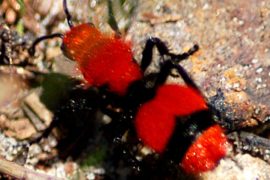Because the color of the snout can also be genetic: some dog breeds have a pink nose from birth. For example Australia Shepherds, Border Collies, or American Pitbulls.
Snow nose in winter is not the only pigmentation disorder in pets.
The short days are having an effect. A pink stripe appears on the black tip of the snout, which over time spreads over both nostrils. The snow nose is in season.
“There are various reasons why the dog’s nose can have a different pigmentation,” says Zoodoc Katharina Reitl. The animal coach explains what the color games are all about and when the four-legged friend has to go to the vet.
Snow nose more common in Nordic breeds
“The snow nose is a ‘changeable nose’ that occurs in winter. With less sun exposure, less melanin is also produced, which means that the nose gets lighter in places,” Reitl explains the opposite of skin tanning. The innate effect in huskies is classically described, but golden retrievers, Labradors and Nordic breeds are also frequently affected.
“In dogs, depigmentation can occur at different ages,” says the veterinarian from the ordination at Schönbrunn Zoo. Either the reduced skin color occurs from birth or it occurs when the dog is young. Incidentally, the reverse can be the case with the special merle markings that are often seen in Australian Shepherds. The initially spotted nose only turns black after months.
Complete and partial albinism
“In complete albinism, the pigmentation does not change,” says Reitl, who knows another form of the melanin disorder. The white coat and red eyes are genetic. In piebaldism, individual white spots stand out.
Vitiligo
“The pigmentation can also change due to illness,” says the zoodoc. In the case of vitiligo, for example, the lighter areas of the skin can steadily increase in size. The lack of pigment protection makes the skin sensitive to light, and environmental influences can damage it. There is no cure.
(Harmless) pigment disorders
“Symmetric pigment disorders are rather harmless. But if secretion escapes, crusts form or bumps appear, the dog must go to the vet,” recommends Reitl. Abnormalities, especially at the edge of the nose, can indicate serious illnesses – problems with the immune system, fungal infections and systemic diseases.
Sunburn
“The snow nose is just an optical deviation,” reassures the animal coach: “But if you go to the mountains now, you have to make sure that the light dog’s nose doesn’t get sunburned.”
What does a pink nose on a dog mean?
Pink dog nose occurs when a dog’s normally dark nose loses pigment and becomes noticeably lighter in color. A dark dog nose can become brown or pink. Sometimes lighter dog noses may still have a darker stripe across the nose. The outer edges of the nose, however, will remain dark.
Are pink noses on dogs rare?
The color of a dog’s nose is largely dependent on both his age and breed. Some breeds have black noses, while other breeds are more prone to pink noses. Still other breeds have noses that are the same color as their fur. Many puppies are born with pink noses that darken as they age.
Why is my dog’s nose pink instead of black?
The weather: The most common reason a dog’s nose loses its pigment is called winter nose or snow nose. Some dog’s noses change colors from a dark color to pink in cold weather; turning dark once again when the weather gets warmer.
Will a puppy’s nose stay pink?
To the dismay of their owners, most puppies are born with pink noses and pink pads. This is quite normal and the pigmentation of the offending areas will usually start to change within a week. Breeds that have pink skin on and around the nose take longer.
Do dogs with pink noses go away?
During the winter months, the dog’s nose might turn pink and in spring it will switch back to its natural color. Weather dependent color changes appear in the: Siberian Husky. Labrador Retriever.
Why do dogs noses turn pink as they age?
Snow nose, also known as winter nose, is the loss of pigment in the nose. The nose may go from its normal shade of black or brown to a light brown or pink. This hypopigmentation is usually temporary, and the nose will usually go back to normal in time.





